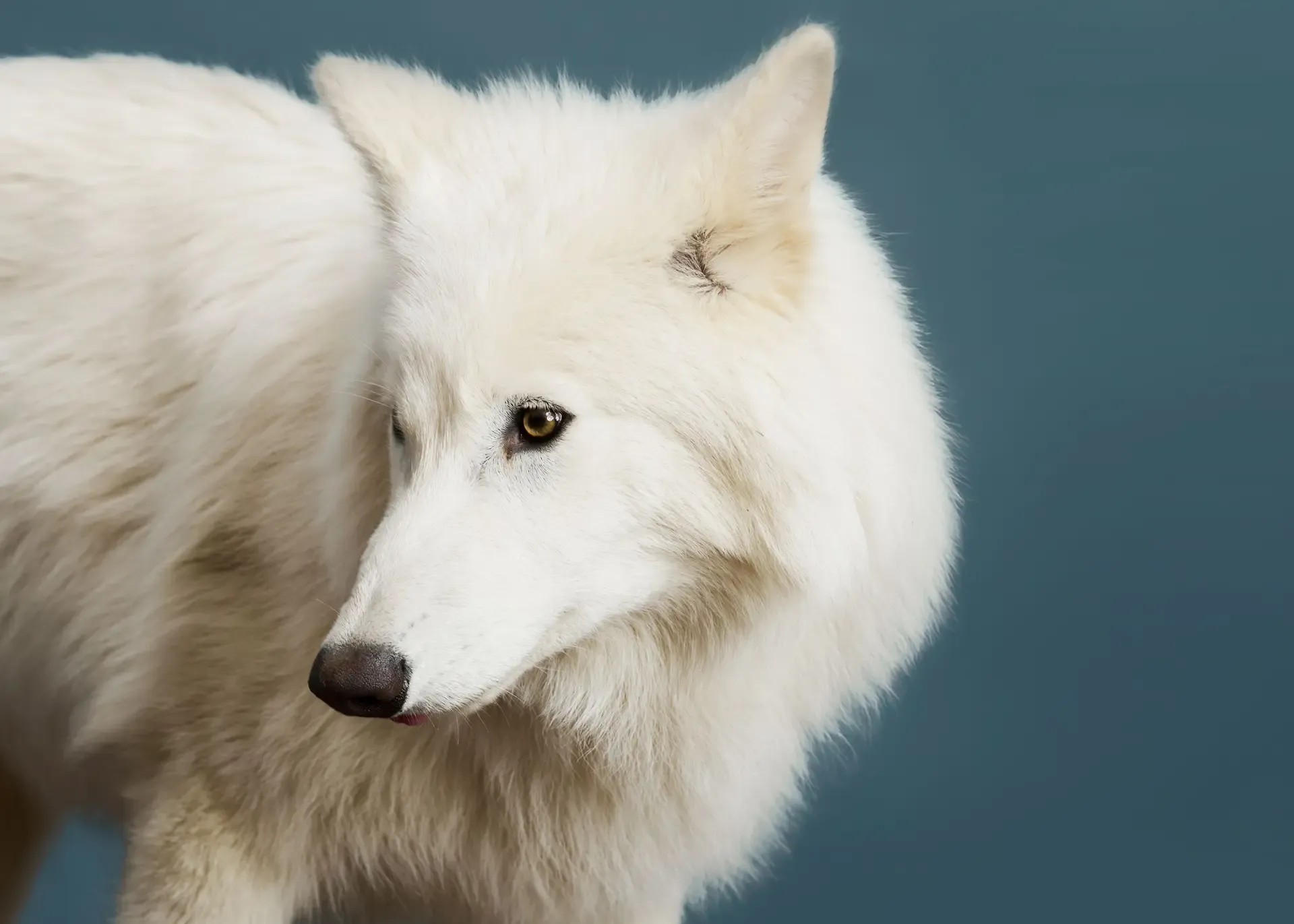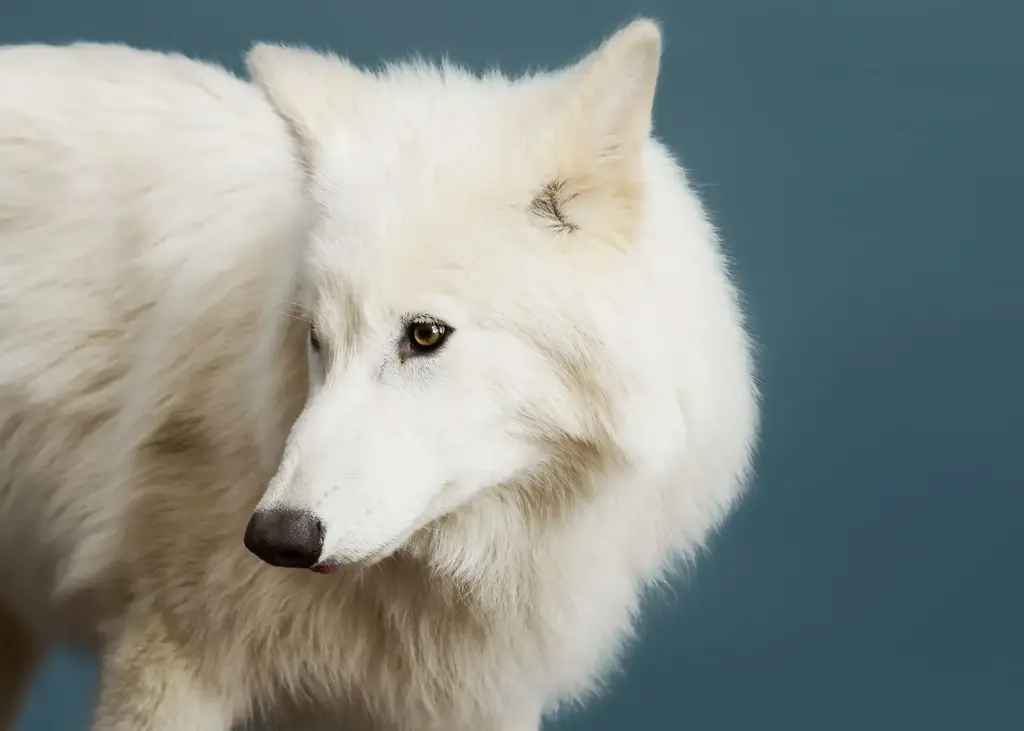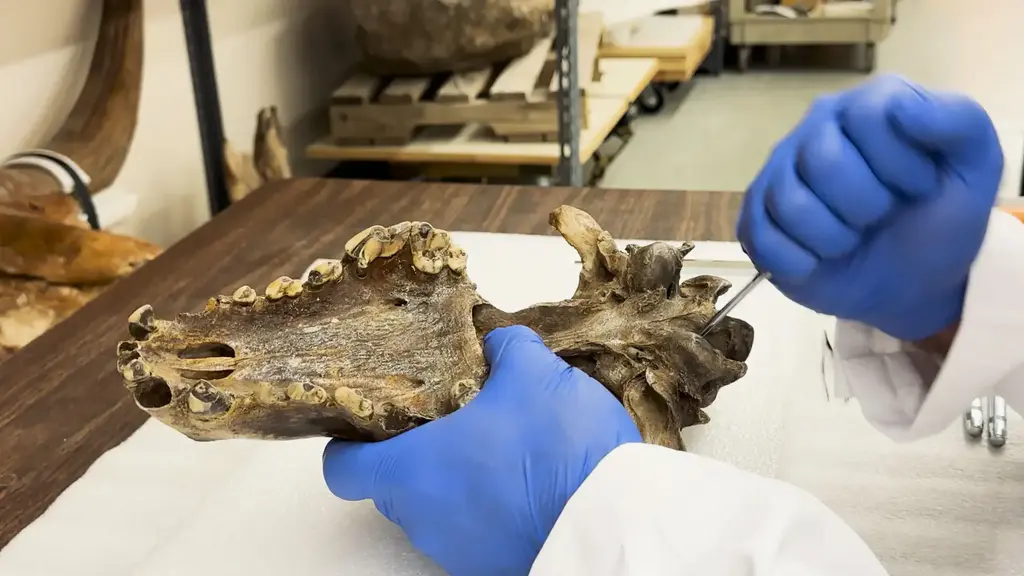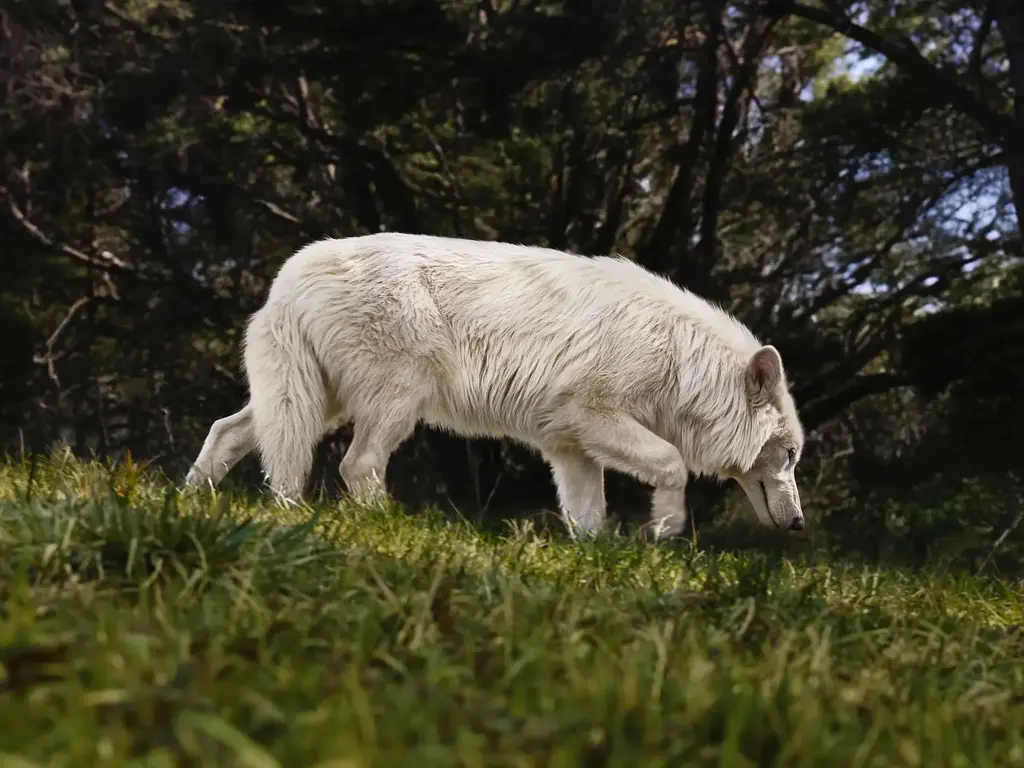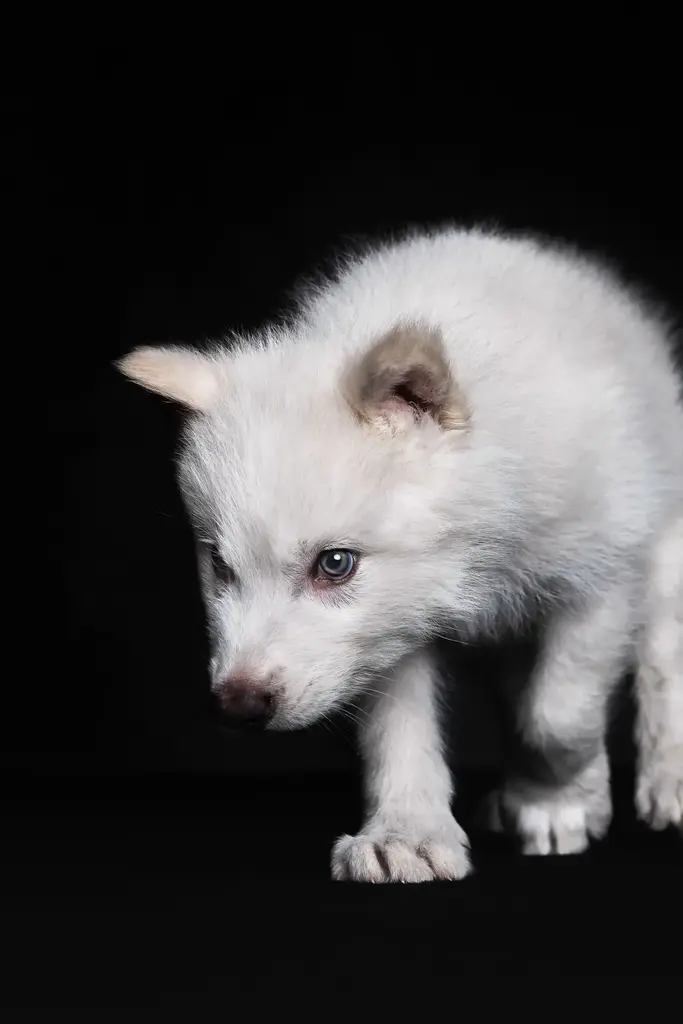Imagine a wolf bigger and more robust than those we know today, roaming the Americas over 10,000 years ago. This was the Dire Wolf, an extinct species that is, surprisingly, walking the Earth again thanks to advances in genetic engineering led by the company Colossal Biosciences.
The Scientific Rebirth of the Prehistoric Dire Wolf
Puppies named Romulus and Remus were born in the fall of 2024, followed by their sister Khaleesi in the winter of 2025. While still young at about 6 months old, the males already impress with their size, measuring nearly 4 feet and weighing 79 pounds, with the potential to reach 6 feet and 150 pounds. Unlike domestic dogs, they exhibit wild behavior, keeping their distance from humans.
These are not ordinary wolves; they are recreations of the Dire Wolf, extinct for millennia. Colossal Biosciences utilized ancient DNA and advanced editing techniques to “rewrite” the genetic code of gray wolves, bringing this species back to life through surrogate mothers (domestic dogs). This landmark achievement represents the first successful “de-extinction” of an animal lineage whose genetic pool had disappeared.
Colossal Biosciences: The Company Behind De-Extinction
Founded in 2021, Colossal Biosciences brings together scientists dedicated to reversing extinction. In addition to the Dire Wolf, the company aims to resurrect the woolly mammoth, the dodo, and the Tasmanian tiger (thylacine). Recently, they announced the creation of a “woolly mouse,” a mouse with genetic traits of the mammoth, such as long fur and a fat metabolism adapted to cold.
Colossal argues that the same technologies used in de-extinction could save currently endangered species. Knowledge gained from the mammoth could enhance elephant resilience against climate change, while efforts with the Dire Wolf might contribute to the conservation of the red wolf. The company sees genetic engineering as a crucial tool—and a moral imperative— to repair the damage caused by humanity to biodiversity.
Genetic Engineering: How the Dire Wolf Came Back to Life
The process of recreating the Dire Wolf was meticulous and innovative. Scientists analyzed the genomes of ancient DNA samples extracted from a 13,000-year-old tooth and a 72,000-year-old ear bone. From this, they identified the critical genetic differences between the Dire Wolf and the common gray wolf.
Surprisingly, it only took 20 edits across 14 genes of the gray wolf to induce characteristics of the Dire Wolf, such as white fur, larger size, stronger shoulders, and distinct vocalizations. Instead of traditional cloning (which requires tissue samples), Colossal isolated endothelial progenitor cells (EPCs) from gray wolf blood. The 14 key genes in these cells were edited to match the Dire Wolf’s genome, and the modified nucleus was inserted into enucleated eggs. These embryos were implanted in healthy female dogs, resulting in Romulus, Remus, and Khaleesi being born via planned cesarean sections.
Key Steps in the Recreation of the Dire Wolf
- Analysis of ancient DNA
- Identification of target genes
- Isolation of EPC cells
- Precise genetic editing
- Nuclear transfer
- Implantation in surrogates
- Cesarean birth
- Controlled rearing
Ethical and Scientific Challenges of Animal De-Extinction
Despite initial success, de-extinction raises complex questions. History shows that introducing species, even with the best intentions, can lead to disastrous consequences, creating invasive species that harm native ecosystems. The cane toad in Australia is a classic example of a biological control that went wrong.
Genetic engineering and cloning are still developing technologies. Cloned animals may suffer from health issues, such as oversized births, organ defects, and premature aging. Moreover, the process can be arduous and risky for surrogate mothers, involving suffering and potential complications such as miscarriages.
Simplified Comparison: Gray Wolf vs. Recreated Dire Wolf
| Feature | Gray Wolf (Base) | Dire Wolf (Edited) |
|---|---|---|
| Fur | Varied | White (Edited) |
| Size | Smaller | Larger (Edited) |
| Structure | Standard | Strong Shoulders/Legs |
| Head/Teeth | Standard | Larger (Edited) |
| Vocalization | Typical howls | Distinct howls |
Saving Endangered Species: The Other Side of the Coin
Alongside de-extinction, Colossal is applying its techniques to help endangered species. The critically endangered red wolf in the southeastern U.S., facing habitat loss and hunting, is a major focus. Fewer than 20 individuals survive in the wild, suffering from a lack of genetic diversity (genetic bottleneck).
Researchers have identified “ghost alleles” of the red wolf in canine populations along the Gulf Coast, intermingled with coyote DNA. Colossal cloned four red wolves using this natural genetic reservoir, creating the first “Ghost Wolves.” The goal is to reintroduce this lost genetic diversity to strengthen the wild population. These clones live in the same protected reserve as the Dire Wolves.
Another project aims to save the northern quoll, an Australian marsupial threatened by the toxic cane toad (introduced by humans). Scientists have identified a single genetic change that may confer resistance to the toad’s toxin. The idea is to create “super quolls” capable of preying on toads without dying, helping to control the pest and save the species.
The Future of Dire Wolves and Genetic Technology
Current Dire Wolf puppies live in a protected 2,000-acre ecological reserve, receiving constant veterinary care and a specific diet. They exhibit instinctive wolf behaviors, such as howling and stalking, but do not hunt live prey. For safety and study purposes, they will not be released into the wild.
The future reintroduction is uncertain. Dire Wolves were specialized hunters of Ice Age megafauna, which no longer exists. Their adaptation to the modern world is a mystery. Furthermore, the welfare of social animals requiring vast territories, like wolves and future mammoths (which need herds and large expanses), in contained environments raises significant ethical concerns.
While challenges persist, Colossal moves forward, not only in science but also as a business valued in the billions. The technology being developed holds commercial potential in areas such as plastic biodegradation and drug development. The company positions itself as a leader in a growing field that includes other organizations focused on genetic conservation and rewilding.
Frequently Asked Questions about the Dire Wolf De-Extinction
- Are the recreated wolves 100% identical to the originals?
Not exactly. They are genetically edited gray wolves designed to express key characteristics of the Dire Wolf, based on available ancient DNA. - What is the goal of bringing back extinct species?
Colossal cites ecosystem restoration, scientific advancement, and the potential to use the technology to save endangered species as primary motivations. - Will the Dire Wolves be released into the wild?
The current individuals (Romulus, Remus, Khaleesi) will not be released. Future rewilding plans are complex and depend on many ecological and safety factors. - What are the risks of this technology?
Risks include health issues in created animals, suffering for surrogate mothers, unforeseen ecological consequences (like invasive species), and ethical dilemmas about “playing God.” - When will we see a woolly mammoth?
Colossal is working on the genetic editing of Asian elephants and aims to have embryos ready for implantation by the end of 2026, with a birth expected in 2028.
The return of the Dire Wolf is a testament to the increasing power of biotechnology. Whether this force can be wisely used to repair past damage and ensure a more biodiverse future is still an open question. Stay tuned for scientific advancements and join the discussion about the future of life on our planet!

